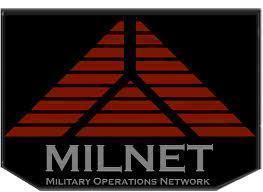What is MILNET?
MILNET (Military Network) is the traditional part of ARPANET (Advanced Research Project Agency Network) that was assigned to be the backbone for the U.S. Department of Defense’s unclassified Internet email and web traffic. ARPANET referred to the entire network and later evolved to what is known as the Internet today. MILNET split away from ARPANET in 1983 so that additional security protocols could be added to MILNET, which would be used with sensitive but unclassified U.S. Military/government transmissions. ARPANET focused primarily on academic research and evolved into modern day Internet.
MILNET History
When ARPANET was first created in 1969. It connected the universities of Utah, Stanford, and California and performed basic information packet switching around these nodes. At the time of MILNET’s split from ARPANET, these nodes had grown to 113 in total with MILNET’s portion of the network totaling approximately 65 communications nodes that were dedicated to military only traffic. There were several gateways left in place between the two networks. These gateways were designed to be uncoupled in the event of attack or network compromise in order to defend the network’s military side.
Evolution of MILNET
As the ARPANET grew into the Internet, the U.S. Military also realized the potential for expanded use of networked communication and data exchange. As a result, MILNET continued to grow until it was split into a number of networks in the 1990s to support varying levels of secure communication. These networks are now referred to as the Non-Classified Internet Protocol Router Network (NIPRNET), the Secret Internet Protocol Router Network (SIPRNET), and the Joint Worldwide Intelligence Communications System (JWICS). These networks are now referred to as the Defense Data Network (DDN) and all U.S. Military services use them.


Comments - One Response to “What is MILNET?”
Sorry but comments are closed at this time.